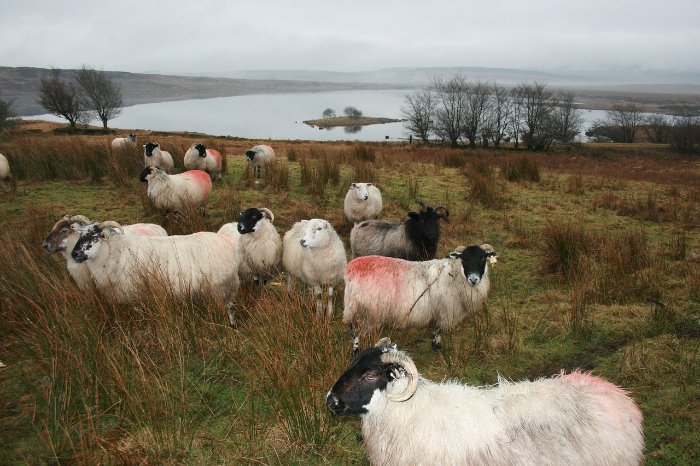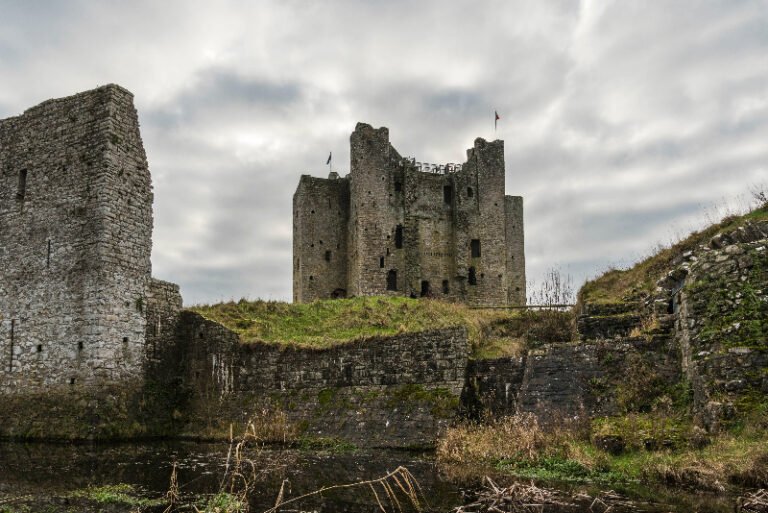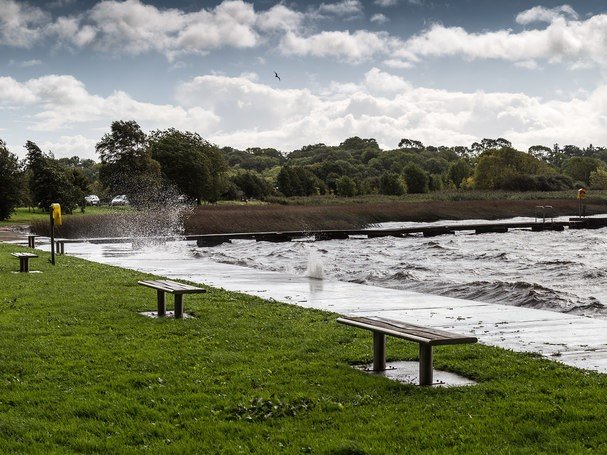
There is a saying “Farming keeps you connected to the earth and to each other.” Farming has been important in Irish society for centuries. It plays a key role in the economy and culture. Irish Farmers mix old practices with new technology. You can find Irish farmers using smartphones and drones as well as herding sheep and milking cows by hand.
In this post, we will explore a typical day of an Irish farmer. We will show you how they balance ancient wisdom with modern technology to maintain a unique way of life.
Early Morning Routine
An Irish farmer’s day often starts before dawn while rest are sleeping. Many wake up around 5:00 AM and some even earlier during busy seasons (planting or harvesting). These early hours are important and set the pace for the day.
The first task is usually milking the cows if they have any cows. Most of the farmers do have cows. In the past they milked cows by hand, sitting on a small stool and using a bucket. It is a popular way and still farmers do that. But when there are lot of cows to milk, they use milking machine. The cows are usually fed during milking that makes it easier for both the farmer and the animals.
After milking process done, it’s time to feed all the animals. This includes cows, sheep, pigs, chickens, and any other livestock. Traditionally, this meant carrying heavy buckets of feed and distributing it by hand. Today, many big farms use automated feeding systems. These systems provide the right amount of feed to each animal, reducing waste and ensuring proper nutrition.
Next, the farmer checks on the crops. They walk through the fields and look if there any signs of disease, pests or nutrient problems. In the past, farmers relied on their experience to spot issues. Now, many big firms use drones with cameras and sensors to monitor crop health from above. Soil sensors also provide real-time data on moisture and nutrients, helping farmers decide on irrigation and fertilization.
This mix of old and new methods helps Irish farmers keep their products high-quality while being efficient and sustainable.
Mid-Morning Activities
Mid-morning hours are for fieldwork. The tasks depend on the season. In spring, the focus is on plowing and planting and during summer and autumn, it’s time to harvest the crops grown over the year.
Plowing prepares the fields for planting. In the past, this meant using a horse-drawn plow and lots of physical labor. Modern tractors with advanced plows now make this job easier and faster. Almost every farmer uses it.
After plowing, it is time for planting and later harvesting. Done by hand is a tradition. This process passed down through generation to generations. With modern technology now it is become even easier. They have machines to do the job done. These machines cover large areas quickly and need fewer workers and boost productivity.
Weather forecasts are crucial for these activities. Irish weather is unpredictable, so farmers must adapt. They use traditional knowledge passed down through generations and modern technology. Detailed weather forecasts and real-time data help farmers plan their work better.
Lunchtime
By midday, it’s time for a well-deserved break after the heavy work. Lunchtime meals are hearty, featuring traditional Irish dishes that provide energy for the rest of the day’s work.
A typical meal might include soda bread, a dense, slightly sweet bread that pairs well with hot soup. Irish stew is another favorite which is made with lamb or beef, potatoes, carrots and onions. For a lighter option, colcannon-mashed potatoes mixed with cabbage or kale is good option.
On larger farms with several workers, lunchtime can have a different dynamic. Communal eating areas might be set up, and the meal becomes a chance for everyone to relax.
Afternoon Tasks
Afternoon tasks for farmers are diverse and demanding. As the day moves into the afternoon, tasks shift between fieldwork and maintaining equipment. This time is crucial to keep the farm running smoothly and efficiently.
Fieldwork often continues from the morning, especially during planting or harvesting seasons. Tasks may include planting, tending to crops, or more harvesting. Modern machinery helps farmers cover more ground with less effort.
When not in the fields, farmers maintain their equipment and facilities. Tractors, plows, milking machines, and other tools need regular upkeep to avoid breakdowns.
Animal care is another important part of the afternoon. Farmers check the health of their livestock. Grooming animals, like shearing sheep or trimming cattle hooves is also part of this routine to keep animals healthy.
Evening Routine
To secure the livestock is an important work of evening. They make sure all animals are in their shelters. They check that all gates and fences are intact to protect the animals from predators and weather. Traditional herding methods are still used as some farms have automated gates and systems.
After the physical work there still, some administrative tasks left. Record-keeping tracks etc. This help plan for the next day, organize tasks, order supplies and schedule activities based on weather forecasts.
Evenings also include relaxation and leisure activities. This might be reading, watching TV, or enjoying the quiet countryside. This downtime is essential for recharging before another busy day.
Seasonal Variations
Spring: Planting Season
Spring is a busy time on the farm. It is time to prepare the soil and to plant crops. They plow fields, spread fertilizer and sow seeds. Spring is also lambing season. Sheep farmers look over their flocks helping with births and taking care of newborn lambs.
Summer: Growth and Maintenance
In this season, farmers focus on caring for the growing crops. They water, weed, and check for pests and diseases. They also maintain their equipment, getting it ready for harvest. Summer can be quieter but requires constant attention to ensure crops grow well.
Autumn: Harvest Season
Autumn is harvest time. So, it is time for hard work. They work long days in the fields to gather grains and other crops quickly before the weather changes. Harvesting is hard work but rewarding as it shows the results of their efforts.
Winter: Maintenance and Planning
Winter is quieter but still important. With fields resting, farmers maintain equipment and plan for the next year. They care for livestock, making sure animals are fed and sheltered from the cold.
Challenges and Rewards
Farming in Ireland has its challenges. The weather is one of the biggest issues. Although the climate is usually mild and it change suddenly. These sudden changes disrupt planting and harvesting. They can also damage crops and make it hard to care for livestock. Farmers need to change their plans quickly to reduce the impact.
Market prices are another challenge. The prices farmers get for their products can change a lot. These are due to global markets, trade policies and consumer demands what makes hard for farmers to plan financially and have a steady income. Labor shortages are also a problem, especially during busy seasons. It is hard to find reliable and skilled workers. This is made worse by rural depopulation and competition from other industries.
Despite these challenges, farming has many rewards. One of the best parts is the sense of community. Rural communities in Ireland are close-knit. Neighbors often help each other during busy times or emergencies.
Farming requires a lot of time and effort, but it is very rewarding. Seeing healthy crops ready for harvest or thriving livestock brings a deep sense of accomplishment. There is a special joy in seeing the results of one’s labor and knowing it supports the family.
Future of Farming in Ireland
The future of farming in Ireland is changing. One key development is precision farming. This uses technology to monitor and manage fields accurately. It helps with planting, fertilizing, and more.
Drone technology is also transforming Irish agriculture. Drones with cameras and sensors survey large areas of farmland quickly.
Sustainable practices are becoming more popular. Using renewable energy sources like wind and solar power helps reduce the carbon footprint of farms.
Young farmers bring fresh ideas and embrace new technologies. Training programs and financial incentives support these young farmers.
Government support is also key for the future of Irish farming. Policies promote sustainable practices that provide financial help and support rural development. The European Union’s Common Agricultural Policy (CAP) gives substantial funding to Irish farmers. National policies encourage innovation and sustainability to help Irish farmers meet future challenges.
Additional Resources
For those who interested in learning more about Irish farming, there are numerous resources and organizations dedicated to support agriculture in Ireland. Below are some valuable links, recommended readings, and other resources to provide insights.
Irish Farming Associations and Resources
Irish Farmers Association (IFA): The IFA provides members with advice, support, and representation. Their website ifa.ie is a hub for news on farming policy, market prices, and upcoming agricultural events.
Teagasc: Teagasc offers training, advisory services, and research specifically tailored to the needs of the agricultural community in Ireland. More information can be found on their website teagasc.ie.
Organic Farmers & Growers Ireland: For those interested in organic farming, this organization offers certification, training, and networking opportunities. Their website organicgrowersireland.ie is a great resource.
Recommended Reading and Documentaries
“The Farm” by Loughlin Deegan
“Green Fields Forever: The Conservation of Rural Ireland
“Farming at the Edge”
Local Farms and Farmer’s Markets
Many farms offer tours and sell produce directly to visitors. To find a farm near you, check out the regional directories at LocalMarkets.ie
Farmer’s markets are fantastic places to meet local farmers. A comprehensive list of weekly farmers markets across Ireland can be found on IrishFarmersMarkets.ie.
Farming is a big part of Irish culture and economy. Farmers works very hard to ensure that. To support local farmers and sustainable practices is very important. You can help them by buying local produce, going to farmers’ markets and most important by supporting fair agricultural policies. As a son of a farmer, trust me, I know exactly what these means to a farmer. Next time you visit a local market, please take a moment to appreciate them. They will be very glad.






